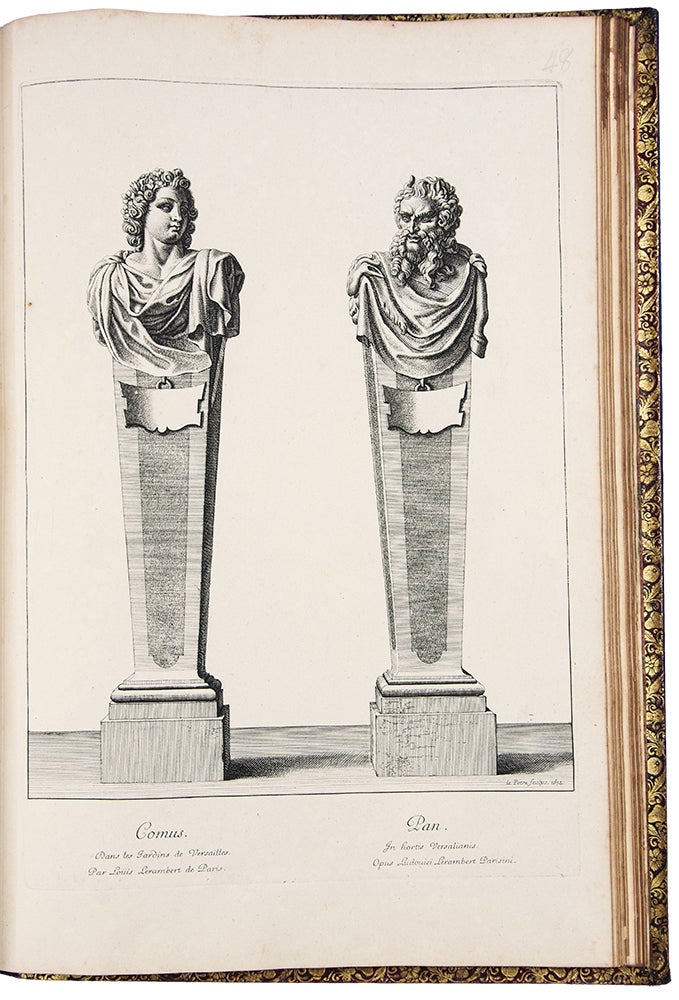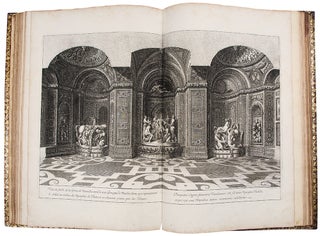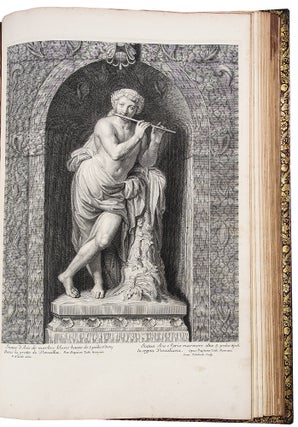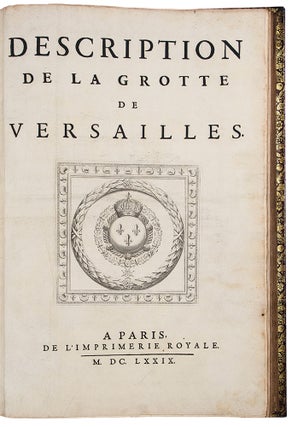FÉLIBIEN, André (1619-1695)
Déscription de la Grotte de Versailles
Paris: de l'Imprimerie Royale, 1679. Folio. (19 1/4 x 13 inches). Letterpress title with large engraved printer's device and royal coat-of-arms; 20 engraved plates (including 3 double-page); 17 additional plates depicting vases, herms, and sphinxes by Jean Le Pautre.
Contemporary French red morocco with elaborate gilt lozenge within gilt borders and crowned corners, spine in six compartments with raised bands, green morocco lettering piece in the second and third, others with a repeat decoration in gilt, all edges gilt, marbled endpapers.
Provenance: David Lionel Salomon
First edition of an important festival book, extra-illustrated with engravings by Jean Le Pautre in a fine contemporary red morocco binding.
The Grotte de Thétys, designed by Charles Perrault, formed an integral part of the iconography of the palace and gardens of Versailles. The first twenty plates relate to the Grotte de Thetis: a plan, an exterior view and a number of plates of details of statuary and shell and coral decoration of the interior. This work is particularly valuable as a pictorial record as the Grotto was demolished in 1684 to make way for the new southern wing at Versailles. The Grotto of Thetis was the "the supreme example of the grotto-nymphaeum; once a reservoir, it was within this triple arcaded structure that 'the King goes ... to take rest from his great works. [Refreshed he returns] with the same ardour as the Sun who begins again to light the world.' Behind the triumphal arch were niches resplendent with nymphs and tritons attending Apollo, and hydraulic machines which set in play 'an infinity of small crystal globes, among a confused mass of drips and atoms of water that seem to move in this place as the atoms of light which one discovers in the rays of the Sun' (Andre Felibien, Description..., 1676) (Oxford Companion to Gardens, p. 237). "It was designed to represent the climax of the astrological myth of the entire garden, the completion of Apollo's solar course and his return to rest in this underwater cave. The grotto was a marvel of technical innovation. Félibien considered it to be a completely successful imitation of nature by art. The creation lasted only twenty years. It was destroyed in 1684 to be replaced by Mansart's north wing of the palace. However, its unique beauty is preserved with this recording by Félibien" (Millard).
Berlin Katalog 3447; S. Taylor-Leduc, 'A new treatise on seventeenth-century garden history: André Félibien's "Description de la Grotte à Versailles"', in Studies in the history of gardens and designed landscapes, 18:1 (1998 Spring), p. 35-51; RIBA, Early Printed, 1 (1994), 515; Millard , I (1993), no. 69, p.180-2.
Item #39691
Price: $15,000.00







